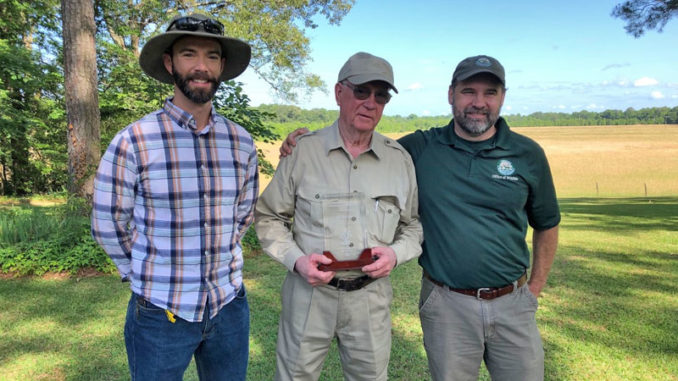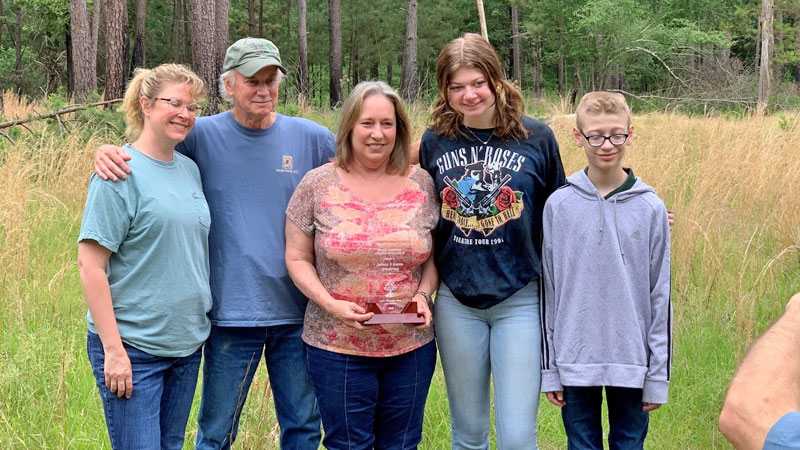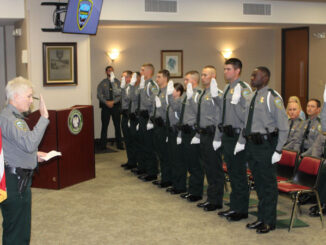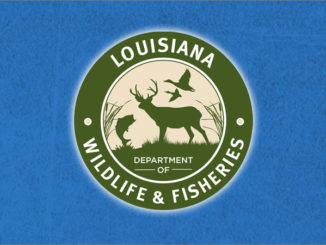
Two north Louisiana families have been honored with the 2020 Private Lands Conservation Champion awards from the Lower Mississippi Valley Joint Venture (LMVJV) because of their work in maintaining and enhancing imperiled forest land which they own and manage.
Dr. Johnny Armstrong and Karen Armstrong from Lincoln Parish and Ed Justice of Morehouse Parish are the recipients of the award. The Louisiana Department of Wildlife and Fisheries (LDWF) is proud to be a partner in this Joint Venture, working together to conserve the landscape for all species.
The LMVJV is a self-directed, non-regulatory private, state, federal conservation partnership that exists for the purpose of sustaining bird populations and their habitats within the Lower Mississippi Valley region through implementing and communicating the goals and objectives of relevant national and international bird conservation plans.
Johnny Armstrong and Karen Armstrong
For 13 years, Dr. Johnny Armstrong and Karen Armstrong have actively managed their 500-acre property in Lincoln Parish to maintain and enhance an old growth stand of shortleaf pine/oak-hickory woodland, a critically imperiled community in Louisiana. They have maintained and enhanced this site using a combination of prescribed fire, selective herbicide application, and understory restoration using native seed from Louisiana, resulting in what is perhaps the best example of this community type in the state.
It is rare to find examples that have high quality overstory and a well-developed herbaceous understory layer, illustrated on this property due to the Armstrong family’s personal stewardship, including hand collecting and planting native grass seed for understory establishment.
Dr. Armstrong’s use of prescribed fire to maintain an open woodland ecosystem creates excellent habitat for wild turkey, northern bobwhite quail and white-tailed deer, as well as for many of the state’s Species of Greatest Conservation Need (SGCN), including grasshopper sparrow, Bachman’s sparrow, and red-cockaded woodpecker.
The Natural Resources Conservation Service (NRCS), D’ Arbonne Soil and Water Conservation District, and other partners provided technical assistance via programs such as the Environmental Quality Incentives Program (EQIP) and Conservation Stewardship Program (CSP). A large portion of the property is enrolled in a voluntary Conservation Easement with The Nature Conservancy.
The property is also part of LDWF’s Natural Areas Registry. Finally, the Armstrong family goes out of their way to share their property and experience to enhance conservation education of the general public, with a focus on students from nearby Louisiana Tech University.

Ed Justice
Justice spends many days each year “giving back to the land” on his 850-acre property in Morehouse Parish. For the last 18 years, natural resource professionals from many partner organizations have been welcomed on this property, which encompasses a two-and-a-half-mile stretch of Bayou Bartholomew, a Scenic Stream designated by the Louisiana State Legislature. The tract includes mature and reforested bottomland hardwoods, a green tree reservoir, permanent water and emergent marsh.
Other habitat types include mature mixed pine/hardwood, and grassland managed as early successional habitat. Areas still in agricultural production include a hay meadow and pecan orchard.
Justice has implemented practices such as grassland restoration, prescribed burning, wetland management, invasive species control, and more through NRCS programs such as EQIP and CSP, with technical assistance from a variety of partners, including LDWF, NRCS, United States Fish and Wildlife Service, Ducks Unlimited and Quail Forever.
A total of 350 acres have been restored and permanently protected with Wetlands Reserve Easements, and the whole property is recognized and enrolled in the Forest Stewardship Program through the Louisiana Department of Agriculture and Forestry. Justice is achieving his conservation goal of leaving this piece of property better than he found it by focusing on a wide diversity of wildlife habitat, water quality improvement, wildlife corridors and pollinator habitat.
About LMVJV
The Lower Mississippi Valley Joint Venture’s vision is a landscape supporting healthy native bird populations and other wildlife across the LMVJV. See what it has been doing at www.lmvjv.org.

